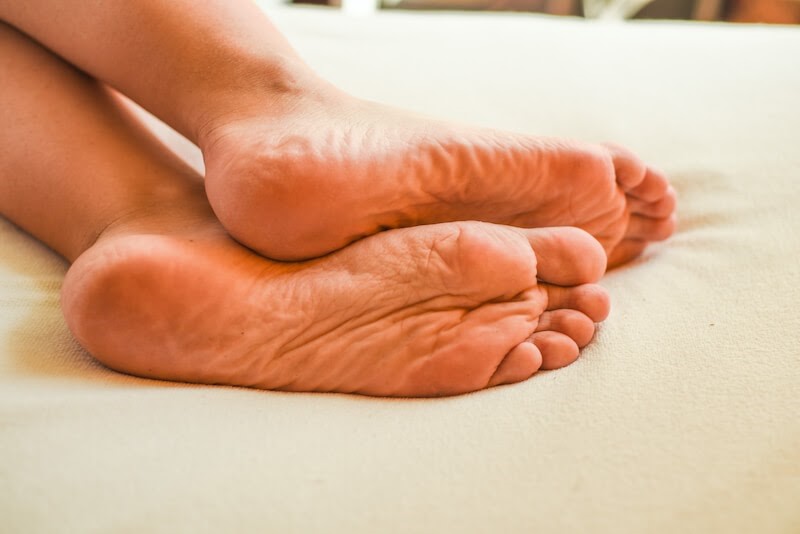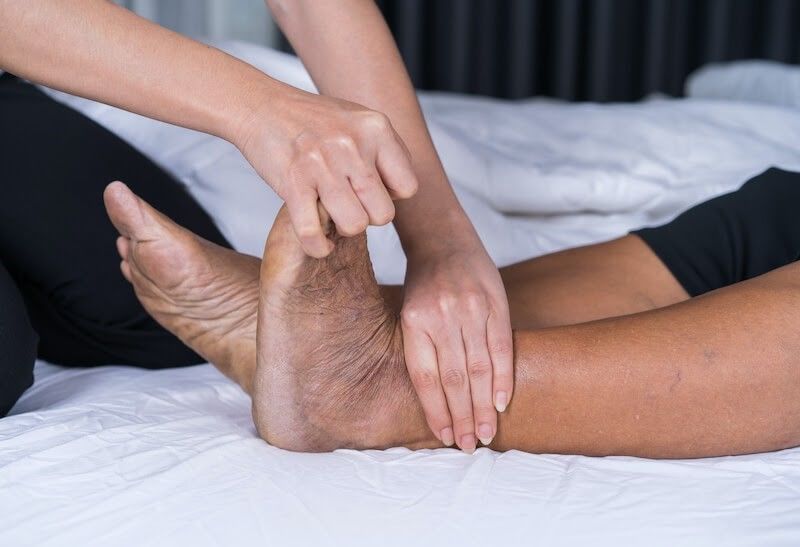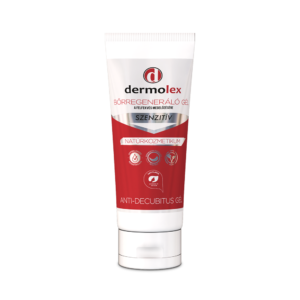Heel pressure ulcers are really common amongst bedridden patients. In this article, we gathered the best heel pressure ulcer prevention methods.
Pressure Sores
Pressure sores occur when the blood supply to an area of the body is cut off because of excessive and prolonged pressure on it. This causes the skin in that area to die, resulting in an open wound or ulcer on the skin. These injuries are often referred to as pressure ulcers or pressure wounds, bed sores, and decubitus. Friction (often caused by skin rubbing against clothing or bedding) and shear (commonly experienced when a patient slides as an adjustable bed is being raised or lowered) can cause tearing on already delicate skin, worsening the condition and increasing the chances of infection. People with limited mobility are most at risk for developing pressure ulcers.
Areas Of The Body Most Commonly Affected:
- The back or sides of the head
- Shoulder blades
- Spine
- Elbows
- Lower back and tailbone
- Hips
- Buttocks
- The backs of the knees
- Ankles
- Heels
Whether an individual uses a wheelchair, is confined to bed, or is otherwise limited in their mobility, these areas of the body are in almost constant contact with a surface and experience prolonged pressure, increasing the probability of pressure ulcers developing. Of these areas, heel ulcers account for approximately 33% of all pressure ulcers acquired, increasing the likelihood of morbidity and mortality, and in some cases, amputation.
Risk Factors For Developing Pressure Sores On Heels
- Immobility
- Advanced Age
- Problems with blood circulation/vascular disease
- Inadequate/malnutrition
- Dehydration
- Low albumin levels/anemia
- Obesity or low body mass index
- Diabetes
According to the New England Journal of Medicine, „The lifetime risk of people with diabetes to develop a foot ulcer is 34%.” Diabetics are at an increased risk for developing „diabetic foot” because of the high blood sugar levels, poor circulation, nerve damage, and immune system issues that are associated with the condition.
Heel Pressure Ulcer Prevention Methods
- Reposition frequently. Shift weight every 1 – 2 hours.
- Use cushions or a mattress that relieves pressure and keeps the body well positioned. Do not use ring cushions as they create pressure points.
- Use heel protectors to relieve excess pressure.
- Ensure that the skin is clean and dry. Use a mild cleanser and gently pat dry.
- Use a moisture barrier gel to protect the skin. Barrier gels, such as dermolex, create a physical barrier when applied, protecting the skin from irritants and helping to prevent decubitus.
- Change bedding and clothing frequently. Wrinkles can cause irritation, so it’s important to keep all clothing and bedding smooth.
- Inspect the skin daily. Look closely for the warning signs of a pressure sore.
Although there is little scientific evidence to support a direct correlation, most doctors recommend a diet that is high in protein and contains vitamins A and C, and the minerals iron and zinc as an additional preventative measure.
Identifying The Different Stages Of Heel Pressure Ulcers
- Stage 1 – The area will appear red (with dark skin it may appear blue or purple) and feel warm to the touch. This is usually accompanied by a burning, itching, and/or painful sensation.
- Stage 2 – The damaged area has partial-thickness skin loss and may appear as a shallow wound or as an intact or ruptured blister. There will be considerable pain and the skin surrounding the area may also be discolored.
- Stage 3 – Damage has reached the deep tissue below the surface causing the wound to have a crater-like appearance and there will be a loss of sensation to the area.
- Stage 4 – The area is severely damaged and the wound has deepened. Muscles, tendons, bones, or joints may be visible in the wound at this stage.
It is of utmost importance to identify and treat pressure wounds on heels at the earliest stage. If you notice a red area, apply pressure with your fingers. If the redness remains after you release the pressure, change positions to alleviate pressure from the area and monitor closely. If there is no improvement, or the condition worsens, contact your doctor in 24 to 48 hours.
Heel Bedsore Treatment

- Remove pressure from the affected area.
- Protect the wound from infection with medicated gauze or other special dressings.
- Keep the wound clean.
- Use antibiotics to treat any infections present.
- Apply negative pressure wound therapy to draw fluid and infection out of the affected area
- Debride the wound. Remove the damaged, infected, or dead tissue until new connective tissue is present.
- Perform skin grafts in order to transplant healthy skin to the wounded area.
An ounce of prevention is worth a pound of cure. Heel ulcerations are extremely painful and slow to heal. Depending upon the severity of the heel wound and the condition of the individual, the healing process can take days, months, or even years. According to the U.S. Department of Health and Human Services, „About 60,000 patients die as a direct result of a pressure ulcer each year.”


